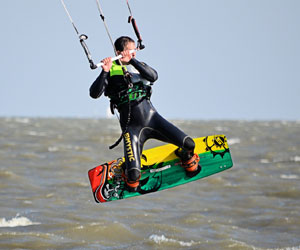Shoulder Fracture FAQs

A direct blow or a fall onto your outstretched arm — often as a result of a car accident or sports-related injury — may result in a shoulder fracture. While you should always see your doctor immediately if you suspect you have a fracture, the following topics will help you understand what to expect.
What are the signs that I have a fracture?
Pain, swelling, and limited arm movement are common. You may also feel catching, popping, or grinding sensations if you try to lift your arm. You will likely experience swelling within the first 2–4 hours and subsequent bruising over the next several days.
What bones are often involved in shoulder fractures?
The collarbone (clavicle) is fractured the most commonly, though the upper arm bone (humerus) can also break from a blow to the shoulder. The shoulder blade (scapula) is the least likely to fracture because the chest and surrounding muscles protect it.
What will my doctor do?
If you suspect you have a fracture, your doctor will ask you questions about the injury and symptoms, then examine to make sure no nerves or blood vessels were damaged by the break. He will then order an x-ray to pinpoint the location and severity of the fracture and also to check the shoulder for other fractures. If the fracture is severe, he may need to do a CT or CAT scan to view it in more detail. From there, he will decide the best course of treatment.
Will I have to have surgery?
The fracture will not likely require surgery if the broken ends are still aligned and have not shifted. Nonsurgical treatment involves a period of immobilization in a sling, medication for pain, and a series of stretches and exercises once the bones have started to heal.
Are there complications associated with nonsurgical treatment?
The bones can move out of place before healing, so it is important to follow up with your doctor and follow all instructions he gives you. A "malunion" occurs when bone fragments move out of place and heal while improperly aligned, necessitating additional treatment. Also, you may develop a large bump over the fracture site. In most cases this usually shrinks over time, but sometimes a small bump will remain permanently.
What does physical therapy involve?
Your doctor may provide an at-home exercise plan for you to do, or refer you to a physical therapist. As your pain decreases, you will start with gentle exercises designed to prevent stiffness and weakness, working your way up to more intense exercises after your shoulder has healed. It is very important not to advance exercise and use ahead of your doctor's recommendations as you may slow or impede the healing process.
What if I have to have surgery?
Surgery may be necessary if the bones do not remain aligned along the fracture. Surgery is performed to realign and stabilize the fracture fragments so that healing will occur in the ideal position. In most cases this leads to the best long-term functional outcome. Once the fracture is well aligned, the bone is usually stabilized with a plate and screws or with pins.
What can I expect after getting plates or pins in my bone?
After several days most patients will have significant improvement in pain. Your pain will be improved when the bone is repositioned and stabilized in its normal alignment. Occasionally, you may be able to feel the plate through your skin because there is not a lot of fat in the shoulder area. Plates are typically permanent, but they can be removed if symptoms persist. Pins are generally removed several months after surgery.
What are the complications of surgery?
People who use tobacco, have diabetes, or are elderly have a higher risk of complications both during and after the surgery. General risks associated with surgery include infection, bleeding, pain, blood clots in the leg, damage to blood vessels or nerves, and nausea. Risks for this surgery also include difficulty with bone healing, lung injury, and hardware irritation. You should consult with your doctor as to the risks specific to your particular fracture.
When can I get back to my normal activities (sports, physical activity, etc.)?
First and foremost, always listen to your doctor's instructions. Healing on average takes about 3 months, but it is important not to take on too much too soon, as it can lead to problems with healing of your bone.
Supporting You Through Treatment and Recovery: Dr. David P. Huberty
Dr. Huberty specializes in shoulder surgery and also practices sports medicine and elbow and hand surgery. To make an appointment, contact his practice in Tualatin, OR or Oregon City, OR at (503) 656-0836.
